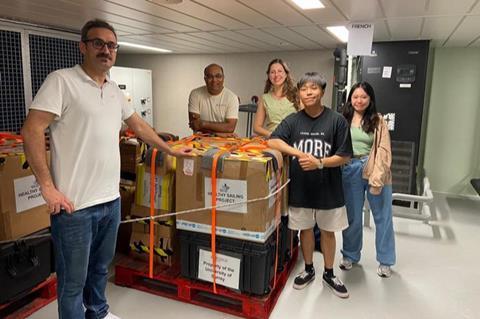The study, led by Surrey’s Global Centre for Celan Air Research (GCARE) as part of Horizon Europe’s HEALTHY SAILING project, involved collaborative efforts between international experts from the UK, Europe, and the cruise industry. The team assessed indoor air quality (IAQ), ventilation, thermal conditions and airborne infection risk aboard a ship carrying more than 5,000 passengers between UK and EU ports.
By monitoring CO2 levels, temperature and humidity in nine different onboard environments, researchers revealed gaps in current ventilation practices, including over-ventilation in theatres and cabins, offering actionable recommendations to enhance safety and energy efficiency.
Roadmap for cruise industry
Professor Prashant Kumar, Founding Director of GCARE and corresponding author of the study, said: “The COVID-19 pandemic brought unprecedented challenges to the cruise industry, with passenger ships often labelled ‘hotspots’ for super-spreading events. While significant progress has been made with indoor air quality management across the sector, there remains a clear need for targeted ventilation strategies in high-occupancy areas and energy optimisation in over-ventilated spaces. These findings provide a comprehensive roadmap for a healthier and more resilient cruise industry.”
READ MORE: Mobile phone data helps track pathogen spread and evolution of superbugs
READ MORE: Study reveals potential flaw in operating room ventilation that increases risk of Covid infection
Using CO2 concentrations as a proxy for exhaled breath, the study found the probability of airborne infection transmission during normal speaking conditions to be very low, at less than 3%. This was primarily due to sufficient ventilation in most areas relative to occupancy levels.
However, in higher occupancy areas where voices are raised to be heard – for example, dining areas and other social settings at peak times – CO2 levels increased, suggesting additional mitigatory measures are required.
Port emissions
Researchers also identified challenges from port emissions impacting IAQ aboard the cruise ship, with elevated ambient CO2 levels in berths linked to marine traffic and port operations. Dining areas (buffet, pubs and restaurants) were particularly susceptible to outdoor pollutants due to their proximity to open spaces and high occupancy. Despite stable air conditioning during docking, ventilation systems struggled to fully mitigate pollution, highlighting the need for better filtration and adaptive ventilation both at sea and in port.
University of Surrey’s GCARE PhD student, Ho Yin Wickson Cheung, worked on the project: “The insights from this study will serve as a valuable guide for cruise operators, many of whom have firsthand experience with the challenges of viral transmission. These simple measures, backed by science, provide practical solutions to help ensure the wellbeing of everyone onboard.”
Setting the stage
By implementing adaptive ventilation strategies onboard, including targeted filtration systems where necessary, cruise operators can ensure passenger wellbeing and safety while improving energy efficiency in overventilated spaces without compromising air quality. The research sets the stage for further exploration and provides a basis for building resilience in the event of another health crisis.
The HEALTHY SAILING project is funded by the European Union’s HORIZON programme (Grant Agreement number 101069764). It is coordinated by the University of Thessaly’s Laboratory of Hygiene and Epidemiology and supported by UKRI under the UK government’s Horizon Europe funding guarantee [grant numbers 10040786 and 10040720]. Additional funding was provided by the Swiss State Secretariat for Education, Research and Innovation (SERI).








No comments yet